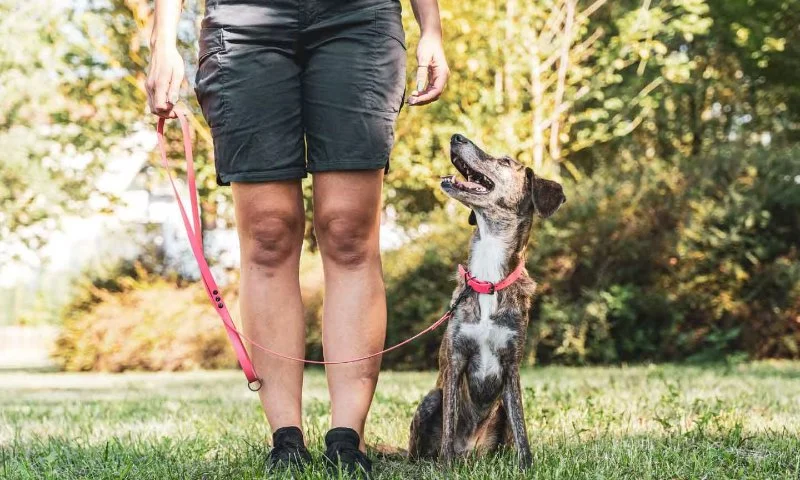
How to Find a Reputable Dog Trainer in Your Area
Finding the right person to train your dog can make all the difference in your pet’s behavior, happiness, and your relationship with them. Learning how to find a reputable dog trainer in your area takes more than a quick online search — it requires knowing what to look for, what questions to ask, and how to assess professionalism. Whether you’re raising a puppy or correcting problem behaviors, the right trainer can bring out your dog’s best. For trusted recommendations and pet resources, visit Omnia Pet.
- 1. Understanding Your Dog’s Training Needs
- 2. Researching Local Trainers Effectively
- 3. Checking Certifications and Training Methods
- 4. Evaluating Reviews and Reputation
- 5. Real-World Experiences and Case Studies
- 6. Building a Strong Relationship With Your Trainer
1. Understanding Your Dog’s Training Needs
Before you start your search, define what kind of training your dog needs. Is your goal basic obedience, leash walking, or advanced behavior modification? Puppies, rescue dogs, and reactive pets all require different approaches. Understanding your dog’s temperament helps you choose a trainer whose style aligns with your goals.
Types of Dog Training
There are several training categories — from puppy kindergarten to agility, therapy certification, and behavioral rehabilitation. A reputable trainer will specialize in one or more of these areas and provide clear explanations of their process.

Chuck & Don's Pet Food & Supplies
Red WingGoodhue CountyMinnesota
3249 S Service Dr, Red Wing, MN 55066, USA
Personal Goals Matter
Consider your own expectations. Do you want quick results or gradual behavior changes? Are you looking for private sessions or group classes? Knowing this helps you narrow your options before contacting potential trainers.
2. Researching Local Trainers Effectively
Once you know your dog’s needs, start researching trainers near you. A simple “dog trainer near me” search is just the beginning — but the details make all the difference. Look for trainers who maintain professional websites, offer transparent pricing, and have testimonials from previous clients.
Red Flags to Watch For
Be cautious of trainers who guarantee instant results or use harsh training tools without explanation. Reputable trainers prioritize your dog’s comfort and long-term behavioral improvement over quick fixes.
Ask for Recommendations
Your veterinarian, local shelters, or community pet centers are great sources for referrals. They often know which trainers have proven success and ethical practices. Platforms like Omnia Pet also help connect pet owners with verified professionals in their area.
3. Checking Certifications and Training Methods
Not all dog trainers are certified, but credentials can indicate experience and commitment to humane methods. Look for certifications from reputable organizations such as the Association of Professional Dog Trainers (APDT) or the International Association of Animal Behavior Consultants (IAABC).
Understanding Training Philosophies
The best trainers use positive reinforcement — rewarding good behavior instead of punishing bad ones. This builds trust and lasting results. Ask your trainer what methods they use and avoid anyone who relies heavily on intimidation or outdated dominance techniques.
Transparency Builds Trust
A credible trainer should be open about their education, techniques, and experience. If they allow you to observe a class before enrolling, that’s a strong sign of confidence and professionalism.
4. Evaluating Reviews and Reputation
Online reviews can offer valuable insights, but they should be read critically. Look for consistency — multiple reviews mentioning clear communication, visible progress, and humane training are positive signs. Be wary of overly generic or suspiciously perfect feedback.
Social Media Presence
Many skilled trainers share their work online, showing training sessions, happy clients, and educational content. This transparency helps you gauge their methods and success rate before committing.
5. Real-World Experiences and Case Studies
Consider real experiences from pet owners who’ve successfully found trustworthy trainers. For example, when Emily adopted a rescued Border Collie with anxiety issues, she researched three local trainers before finding one who specialized in fear-based behavior. After three months of consistent sessions, her dog showed remarkable progress.
Another case is Brian, whose Labrador was uncontrollable on walks. He chose a trainer who focused on leash reactivity using positive reinforcement, leading to visible improvements in just six weeks. These examples highlight how the right trainer can transform your pet’s behavior — and your peace of mind.
6. Building a Strong Relationship With Your Trainer
Finding the right trainer is only the beginning. Success depends on your commitment and collaboration. Attend every session, ask questions, and apply lessons consistently at home. Training works best when dog owners and trainers work as a team.
Continuous Communication
Don’t hesitate to provide feedback or express concerns. A professional trainer will adjust techniques to fit your dog’s unique personality and your comfort level.
Using Professional Resources
Platforms like Omnia Pet offer expert guidance, allowing you to compare local trainers, read reviews, and explore training products that complement your dog’s learning journey. With the right combination of professional help and dedication, you can ensure a happy, well-trained companion for years to come.








 Los Olivos Animal Medical Center Upland, Urgent care4.0 (19 reviews)
Los Olivos Animal Medical Center Upland, Urgent care4.0 (19 reviews) Britt's Biome5.0 (1 reviews)
Britt's Biome5.0 (1 reviews) East Hartford Animal Clinic4.0 (892 reviews)
East Hartford Animal Clinic4.0 (892 reviews) Primary Pet Care4.0 (109 reviews)
Primary Pet Care4.0 (109 reviews) VCA Camino Animal Hospital4.0 (163 reviews)
VCA Camino Animal Hospital4.0 (163 reviews) Banfield Pet Hospital4.0 (221 reviews)
Banfield Pet Hospital4.0 (221 reviews) The Best Pet-Safe Cleaning Products for Kitten Homes
The Best Pet-Safe Cleaning Products for Kitten Homes Understanding Kitten Weaning: How to Transition to Solids
Understanding Kitten Weaning: How to Transition to Solids Top 10 Most Trainable Dog Breeds and Training Tips
Top 10 Most Trainable Dog Breeds and Training Tips How to Stop Your Dog from Begging at the Dinner Table: Effective Tips
How to Stop Your Dog from Begging at the Dinner Table: Effective Tips Safe and Unsafe Chew Toys for Dogs: What to Buy and Avoid
Safe and Unsafe Chew Toys for Dogs: What to Buy and Avoid Top 10 Most Common Health Issues in Cats and How to Prevent Them
Top 10 Most Common Health Issues in Cats and How to Prevent Them